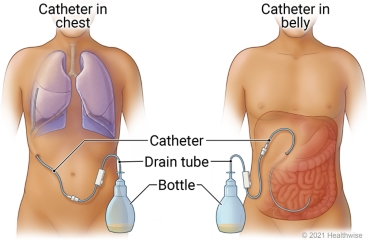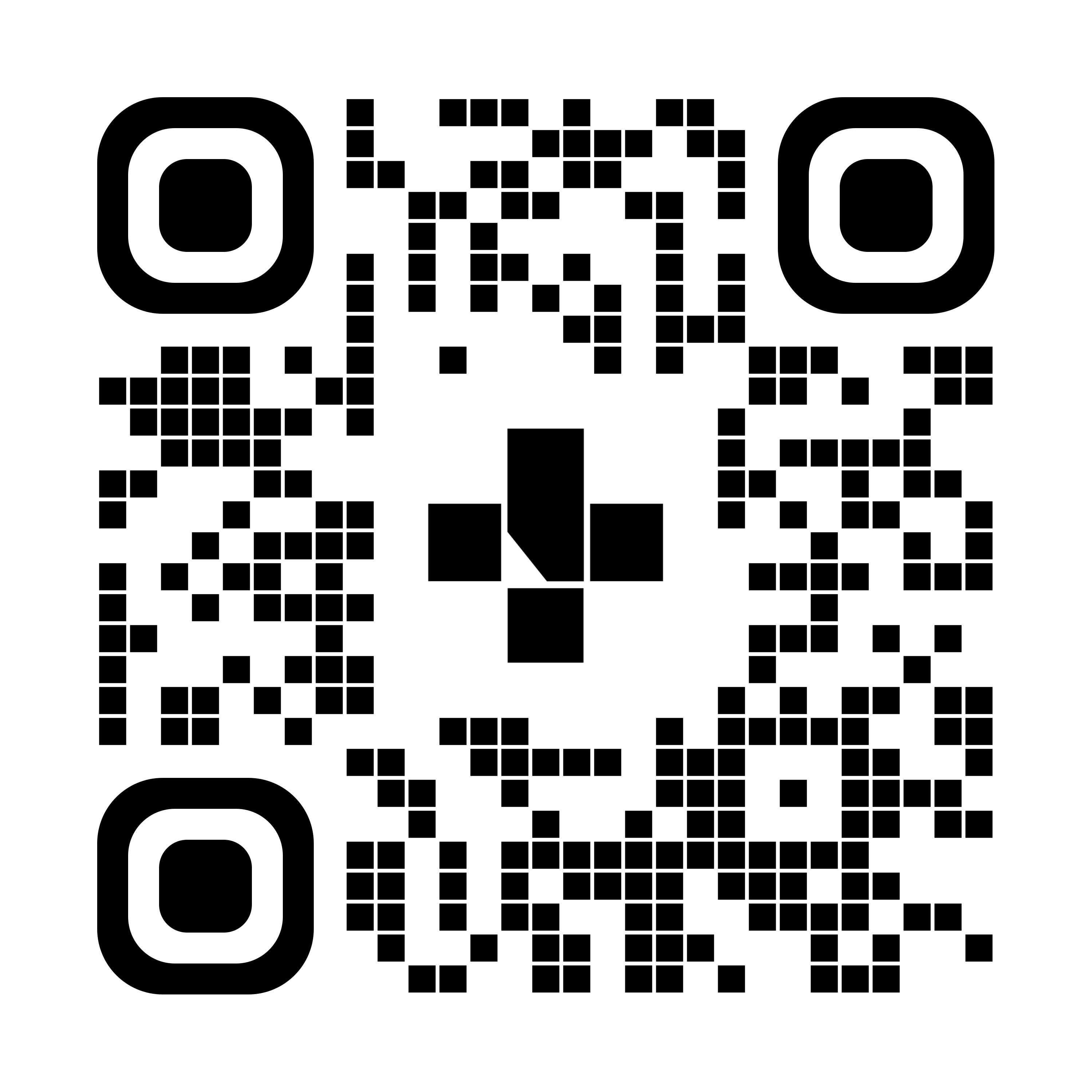Semi-permanent drainage catheter insertion
After your procedure

A semi-permanent drainage catheter is a soft flexible tube that is inserted into your chest or abdomen. The catheter is secured under your skin. One end of the catheter goes into the area of your body where fluid is collecting. The other end of the catheter attaches to a drain tube and bottle.
The semi-permanent drainage catheter and the attachable drainage system let you drain fluid from your body while you are at home or in an outpatient clinic. Your catheter will stay in place until your fluid collections have stopped or until your doctor tells you that you no longer need it. This is why it is called semi-permanent.
Your healthcare team will teach you how to use the drainage system. They will give you instructions that are specific to your drainage system.
After having a semi-permanent drainage catheter inserted, each person recovers at a different pace. Follow the steps below after your procedure to feel better and prevent problems with your catheter.
Activity
Talk to your doctor about what activities you can do with your catheter inserted. You should avoid body movements that may pull on the place where the catheter goes into your body. Avoid lifting weight heavier than 4.5 kg (10 lb.) and avoid any strenuous activities (activities that make you breathe hard and raise your heart rate).
When you put on clothing, be careful around the catheter insertion site to make sure that you do not pull on the catheter. Don’t wear clothing that may irritate your skin near the catheter insertion site.
Medicines
- Your doctor will tell you if and when you can restart any medicines that you usually take. They will also give you instructions about taking any new medicines.
- If you take blood thinners, ask your doctor if and when to start taking them again. Make sure that you understand exactly what your doctor wants you to do.
- Be safe with medicines. Read and follow all instructions on the label.
- If your doctor gave you a prescription medicine for pain, take it as prescribed.
- If you’re not taking a prescription pain medicine, ask your doctor if you can take a non-prescription (over-the-counter) medicine.
Incision care
You will have a small cut (incision) where the catheter goes into your body. This area will be covered by a bandage (dressing) for the entire time that you have the catheter.
Keep the bandage clean and dry. If your doctor gave you instructions about how to change the bandage at home, follow those instructions carefully. Your doctor may also arrange for home care or an outpatient clinic to change your bandage.
To help prevent infections, take a shower instead of a bath. You may shower 24 to 48 hours after the catheter is inserted, if your doctor says it's OK. Cover the catheter insertion site with waterproof material, such as plastic wrap, when you shower so it doesn't get wet. Don’t scrub the area where the catheter enters your body. Pat the site dry.
Avoid baths, hot tubs, and swimming. Do not use any creams, lotions, or ointments on the catheter site, unless your healthcare provider tells you to.
Follow-up care is a key part of your treatment and safety. Be sure to make and go to all appointments and call your doctor or nurse advice line (811 in most provinces and territories) if you are having problems. It's also a good idea to know your test results and keep a list of the medicines you take.
Always carry the medical alert card that your doctor gives you. It has information about your drainage system that healthcare providers need in case you need emergency care.
When should you call for help?
Call 911 anytime you think you may need emergency care. For example, call if:
- You passed out (lost consciousness).
- You have severe trouble breathing.
- You have sudden chest pain and shortness of breath, or you cough up blood.
Call your doctor or Health Link at 811 now or seek immediate medical care if:
- The look or colour of the fluid in the drainage system changes from the usual look and colour.
- You have signs of infection, such as:
- increased pain, swelling, warmth, or redness near the catheter insertion site
- red streaks leading from the catheter insertion site
- pus draining from the catheter insertion site
- a fever
- You have trouble breathing or chest pain.
To see this information online and learn more, visit MyHealth.Alberta.ca/health/aftercareinformation/pages/conditions.aspx?hwid=custom.ab_semi_perm_drainage_catheter_ac.

For 24/7 nurse advice and general health information call Health Link at 811.
Current as of: November 19, 2024
Author: Diagnostic Imaging, Alberta Health Services
This material is not a substitute for the advice of a qualified health professional. This material is intended for general information only and is provided on an "as is", "where is" basis. Although reasonable efforts were made to confirm the accuracy of the information, Alberta Health Services does not make any representation or warranty, express, implied or statutory, as to the accuracy, reliability, completeness, applicability or fitness for a particular purpose of such information. Alberta Health Services expressly disclaims all liability for the use of these materials, and for any claims, actions, demands or suits arising from such use.
